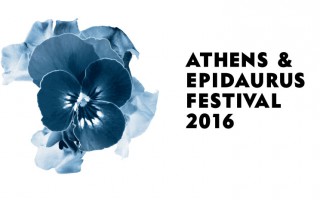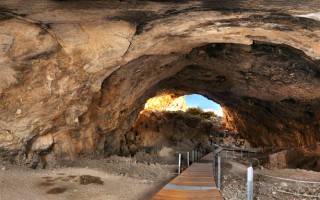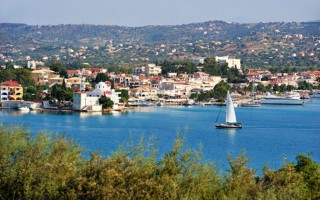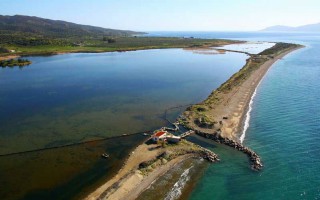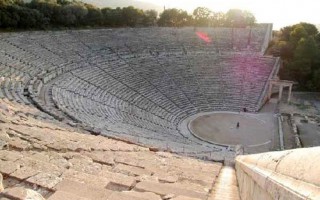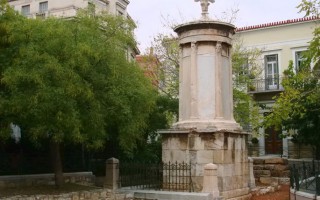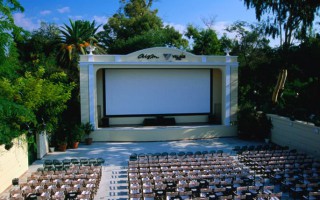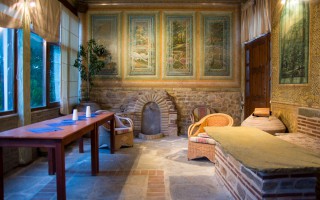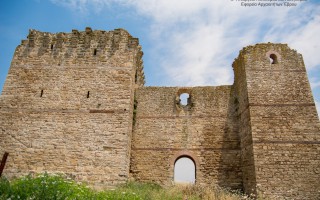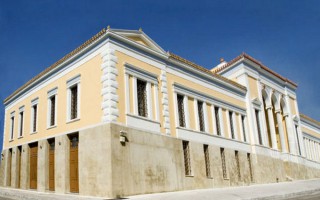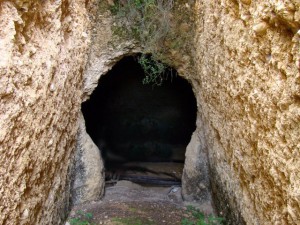 The archaeological site of the cemetery of Dendra with its royal tombs is already famous for the excavation of the bronze armor of Dendra, the most ancient armor found. The discovery brought to light the ancient burial habits and confirmed Homeric poems. The valuables, the everyday life objects, the elaborate jewelry and the figurines of reverence discovered document the wealth of that period. Recent excavations brought to light the remains of two horses and provided valuable insight on the rituals of the Mycenaean age.
The archaeological site of the cemetery of Dendra with its royal tombs is already famous for the excavation of the bronze armor of Dendra, the most ancient armor found. The discovery brought to light the ancient burial habits and confirmed Homeric poems. The valuables, the everyday life objects, the elaborate jewelry and the figurines of reverence discovered document the wealth of that period. Recent excavations brought to light the remains of two horses and provided valuable insight on the rituals of the Mycenaean age.
The archaeological site of the cemetery of Dendra is situated on a hill slope, on the west of the Mycenaean town of Midea, outside the village that bears the same name. It constitutes one of the biggest Mycenaean cemeteries of Peloponnesus.
 The excavations, that started during the spring of 1926 and were carried out in the following decades, brought to light the royal tombs; a tholos tomb and sixteen chamber tombs. The chamber tombs vary in shape and they were engraved in a soft rock on the hill slope. They consisted of three parts: the dromos, an inclining ramp, the stomion, narrow passage, and the chamber. The entrance to the tomb was walled by a dry masonry.
The excavations, that started during the spring of 1926 and were carried out in the following decades, brought to light the royal tombs; a tholos tomb and sixteen chamber tombs. The chamber tombs vary in shape and they were engraved in a soft rock on the hill slope. They consisted of three parts: the dromos, an inclining ramp, the stomion, narrow passage, and the chamber. The entrance to the tomb was walled by a dry masonry.
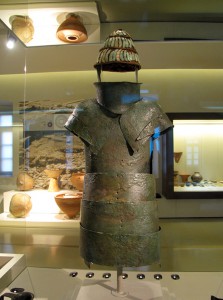 Among the findings at Dendra Cemetery, the one that stands out, is the oldest complete bronze armor. The necropolis uncovered the ancient burial habits of the Mycenaean age, and confirmed Homer, who exalted the Achaeans who wore bronze. Precious valuables, arms, tools, elaborate jewelry, figurines of worship and everyday life objects made of gold, silver, bronze, ivory and other materials confirm the wealth of that period. Recent excavations brought to light two prehistoric domestic horses, possibly battle steeds, which griped the archaeological community.
Among the findings at Dendra Cemetery, the one that stands out, is the oldest complete bronze armor. The necropolis uncovered the ancient burial habits of the Mycenaean age, and confirmed Homer, who exalted the Achaeans who wore bronze. Precious valuables, arms, tools, elaborate jewelry, figurines of worship and everyday life objects made of gold, silver, bronze, ivory and other materials confirm the wealth of that period. Recent excavations brought to light two prehistoric domestic horses, possibly battle steeds, which griped the archaeological community.
All of the findings attest that the site was occupied between 1500 and 1180 B.C. probably pertaining to the nearby acropolis of Midea. They are exposed in the archeological museum of Nafplion and the National Archeological Museum of Athens.
Source: www.mythicalpeloponnese.gr


